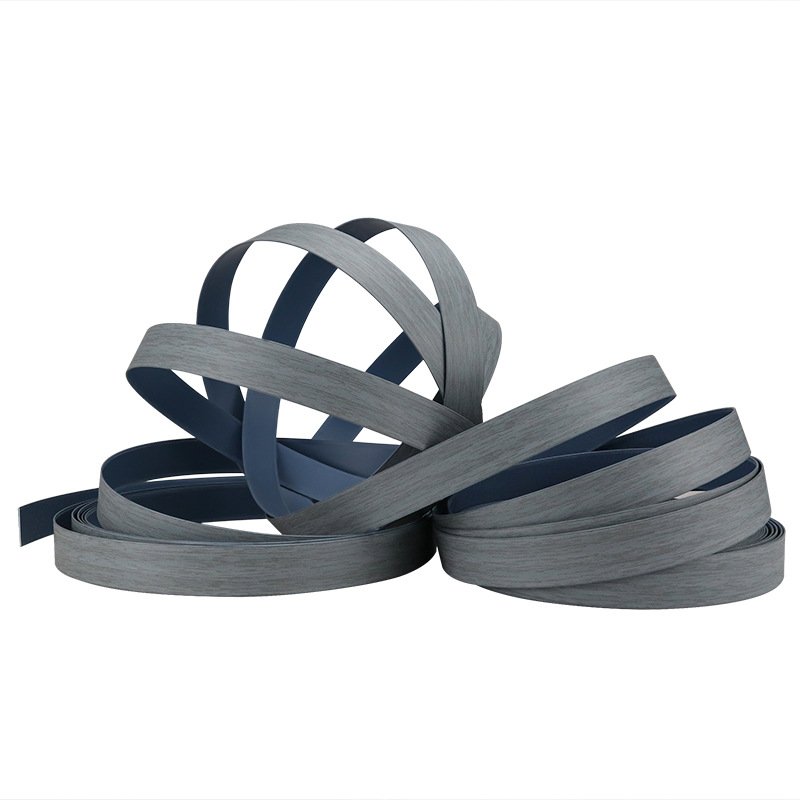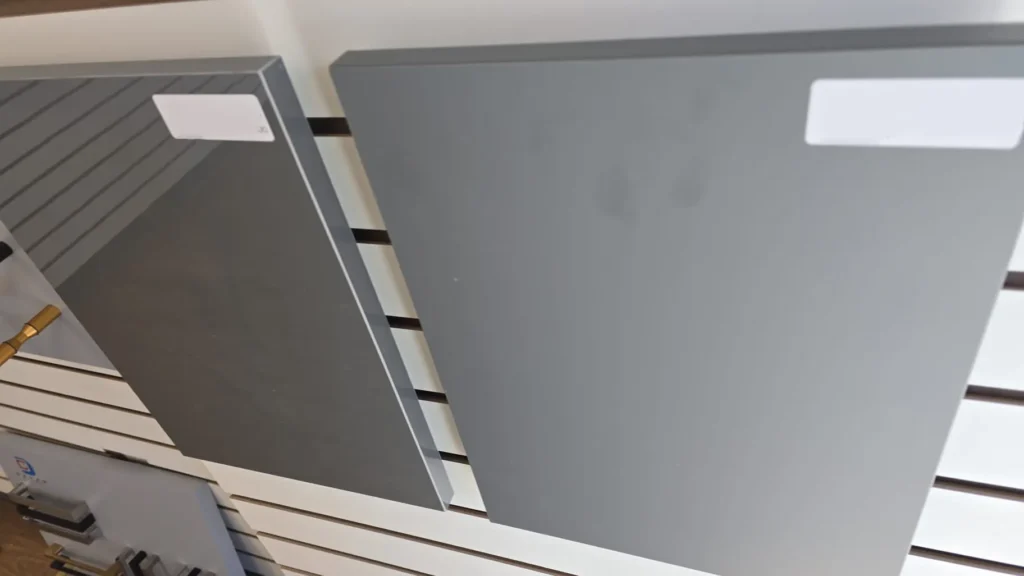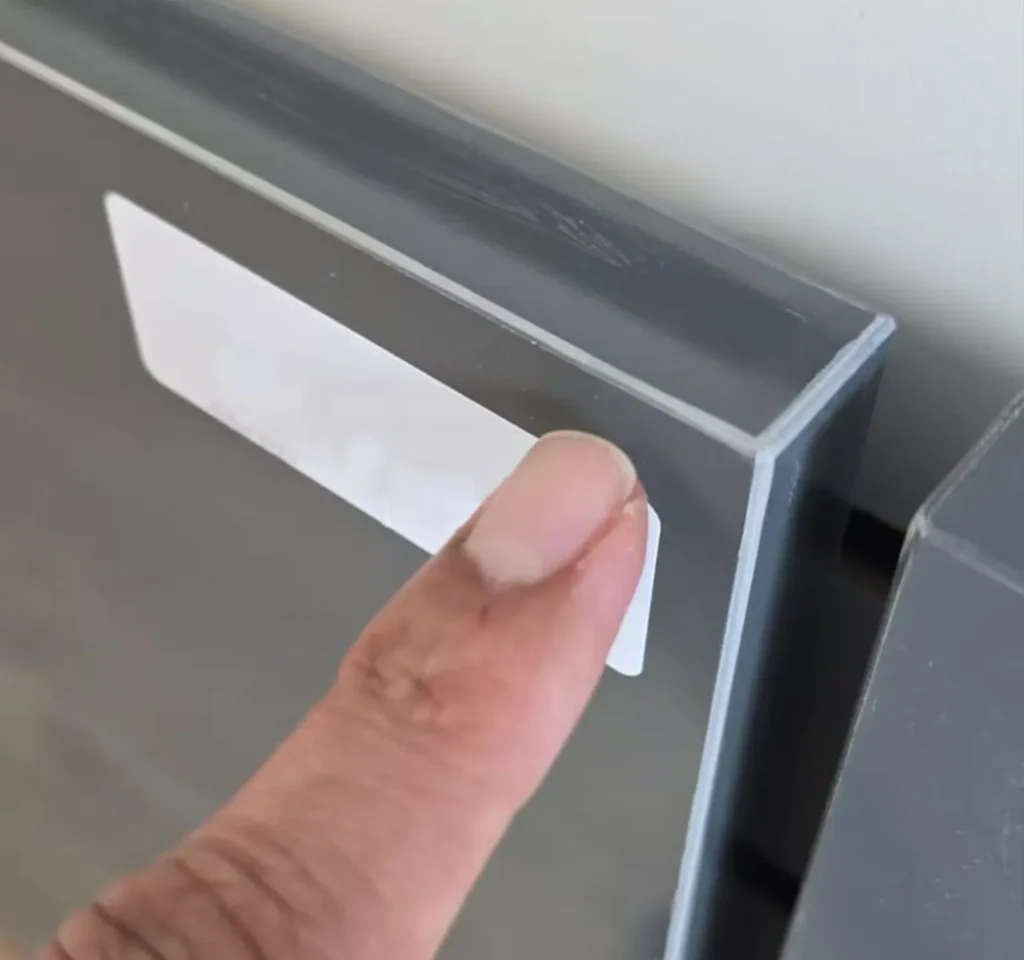Melamine plywood, a material widely used in furniture manufacturing, interior decoration, and other fields, has its service life, aesthetics, and practicality significantly influenced by its edge treatment methods. The following is a detailed analysis of the advantages and disadvantages of various edge treatment methods, aiming to assist you in making more suitable choices in practical applications.

PVC Edge Banding
Advantages: PVC edge banding is one of the most common edge treatment methods currently. By thermally pressing and adhering thin PVC strips to the edges of plywood, it can closely fit, effectively protecting the edges of the panels from wear and moisture. It is relatively low in cost, and there is a wide variety of colors and textures available on the market. Whether it’s imitation wood grain, solid colors, or imitation stone textures, suitable styles can be found, making it convenient to match with different styles of melamine plywood. Moreover, the installation process is mature, the operation is relatively simple, and the construction efficiency is high, making it suitable for large-scale production and processing.
Disadvantages: The production of PVC materials may involve the use of chlorine-containing and other chemical substances, resulting in relatively weak environmental performance. In high-temperature or humid environments, it may release harmful gases. After long-term use, the edge banding may age, fade, or warp, affecting both aesthetics and protection effectiveness, with a relatively short service life. In addition, some low-quality PVC edge bandings have insufficient wear resistance and are prone to scratches.

ABS Edge Banding
Advantages: As an environmentally friendly alternative to PVC edge banding, ABS edge banding does not contain chlorine and other harmful chemical substances, meeting environmental protection standards. It is friendly to the indoor environment and is suitable for places with high environmental requirements, such as home decoration, kindergartens, schools, etc. Its physical properties are stable, and it performs well in moisture-proof and anti-cracking aspects, achieving a protective effect similar to that of PVC edge banding. It also has good weather resistance, is not easily affected by temperature and humidity changes, and is not prone to deformation or aging during long-term use. Its colors and styles are also diverse, meeting various design needs.
Disadvantages: Compared with PVC edge banding, the cost of ABS edge banding is slightly higher, which increases the production and processing costs to a certain extent. In the market, the brands and product qualities vary greatly. If careful screening is not carried out during procurement, poor-quality products may be purchased, affecting the use effect. In addition, the installation of ABS edge banding requires relatively high craftsmanship and equipment. If the operation is improper, the edge banding may not be firmly attached.

Wood Veneer Edge Banding
Advantages: Using solid wood sheets and wood veneer for edge banding can give melamine plywood a natural and beautiful finish, perfectly presenting the natural texture and feel of wood. It is especially suitable for decoration and furniture production that pursue a natural style and wood grain effect. When this edge banding method is paired with wood-colored melamine plywood, they blend seamlessly, appearing more high-end and refined visually. Moreover, the wooden material gives people a warm and comfortable feeling, enhancing the overall atmosphere of the space.
Disadvantages: Wood veneer edge banding is only suitable for wood-colored melamine plywood, with a relatively narrow application range. Wood is greatly affected by the natural environment and is prone to deformation and cracking due to changes in humidity, causing the edge banding to separate from the edge of the plywood, affecting both protection and aesthetics. In addition, solid wood and wood veneer materials are costly, and the processing process is complex, requiring professional craftsmanship and equipment, resulting in a long production cycle and increasing production costs and time costs.
Solid Wood Edge
Advantages: Solid wood edge banding has strong adhesive force and can firmly adhere to the edges of melamine plywood that have undergone advanced polishing, with good stability and being not easy to fall off. It can bring a gorgeous and high-end appearance to furniture or cabinets. The natural texture and unique grain of solid wood enhance the quality and grade of the product, making it especially suitable for the production of high-end furniture. Solid wood materials are durable and can maintain good condition for a long time under normal use and maintenance, extending the service life of the plywood.
Disadvantages: Solid wood materials are expensive, significantly increasing production costs. As a result, melamine plywood products with solid wood edge banding are relatively high in price, limiting their application in some cost-sensitive projects. Solid wood is also easily affected by environmental factors. For example, it may mildew or deform in humid environments and crack in dry environments. The post-maintenance requirements are high, and regular maintenance is required. In addition, the processing technology for solid wood edge banding is complex, requiring a high level of skill from workers, and the production efficiency is low.
Aluminum Edge Banding
Advantages: Aluminum edge banding gives melamine plywood a smooth and shiny appearance, with a modern and stylish feel. It is often used in office desks, modern-style furniture, etc., enhancing the visual effect and grade of the products. Aluminum materials have high strength and hardness, are sturdy and durable, and have excellent impact resistance and wear resistance, effectively protecting the edges of the plywood from damage. At the same time, aluminum has good corrosion resistance, is not easy to rust or oxidize, and can maintain stable performance in humid, acidic, and alkaline environments, with a long service life. In addition, aluminum edge banding is relatively lightweight, making it easy to process and install.
Disadvantages: Aluminum edge banding has a strong metallic texture, and its style is relatively single, which may not match all decoration styles and design requirements, with certain limitations in application scenarios. Its price is relatively high, especially for some high-quality aluminum edge bandings with complex surface treatment processes, increasing production costs. Moreover, the installation of aluminum edge banding requires professional tools and techniques. If the installation is not done properly, problems such as gaps and unevenness may occur, affecting both aesthetics and use effect.
